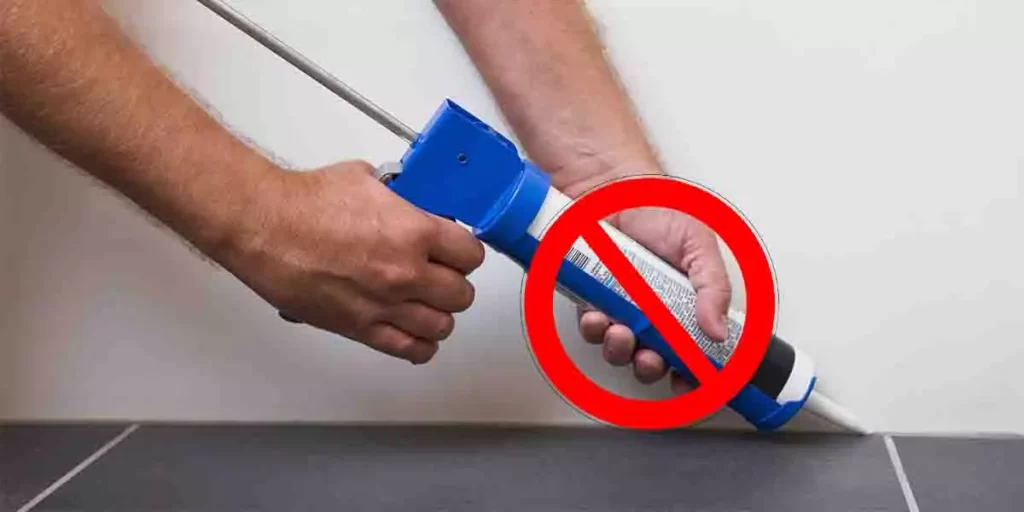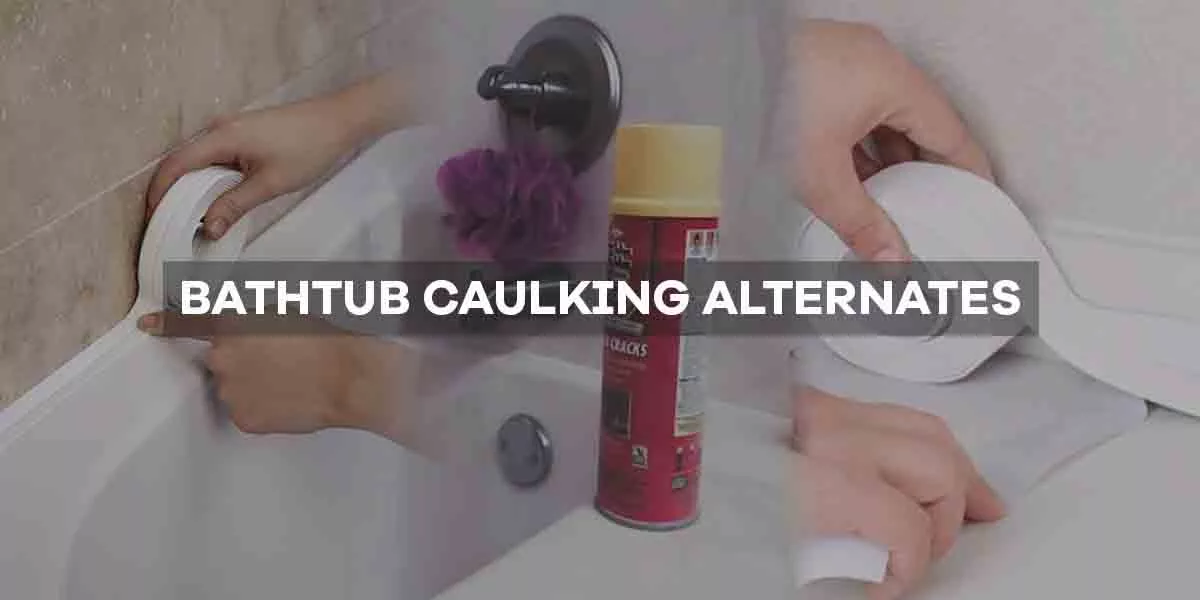You have just noticed that the caulking around your bathtub is starting to deteriorate, and you don’t know what to do about it. But first, let’s understand what caulking means?
Caulk is a substance that can be used to create a seal around the bathtub to prevent water from leaking out. It is also used in acoustics to be soundproof.
In fact, Caulking is relatively easy to install around the bathtub, but it’s not the only solution for leaks. There are plenty of alternatives to caulking around the bathtub.
This article will explore some of the effective alternates that help you make an informed decision when it comes time to make a change around the bathtub.
Before looking at the alternates, let’s acknowledge a few reasons why caulking is outdated as a bathtub sealant.
Why Caulking Is Outdated As Bathtub Sealant?

There are a couple of reasons why caulking is somewhat outdated as a bathtub sealant. These include:
Caulk Does Not Resist Humidity
Caulking is a temporary solution. The material tends to crack when temperatures are high, and humidity is low. Still, caulk easily peels off when it gets wet. Given the ever-wet conditions in the bathroom, it’s no wonder that it doesn’t last.
Caulking Requires Time & Effort
Since caulk won’t last long in damp conditions, you’ll need to keep redoing it. Not only does this mean more time and effort on your part, but it also means that you’ll need to buy more material each time you need to do so.
Caulk Is Susceptible to Chemical Damage
Caulk is sensitive to chemical damage. This means that it will not last long if you use cleaning products or bleach around the bathtub. It will start to re-emulsify and peel off within a short period, even if it stayed dry before you started using these chemicals in the bathroom.
Caulk Is Mildly Poisonous
Caulk is not a healthy choice for your bathtub. Even if it doesn’t emit toxic fumes, the chemicals in caulk can still cause problems to kids or pets if they ingest.
Installing Caulk Is Labor-Intensive
The installation process of caulk around the bathtub is not a simple one. It can be tricky to get a good seal, and if you do, it doesn’t last long either.
The 6 Alternatives to Caulking Around the Bathtub
These limitations facing caulking make one want to explore alternative ways for sealing their bathtub. Luckily, there are several hassle-free options out there.
Here are six alternatives to caulking around the bathtub:
- Spray Foam
- Sealant Tape
- Epoxy Resin Sealer
- Peel-and-stick trim
- Shower corner sealant
- Bathtub and Liner replacement
Spray Foam
Spray foam is a great way to seal the bathtub without any drawbacks that caulk brings.
For instance, once applied, expanding spray foam creates a waterproof seal around the bathtub. In addition to being waterproof, it is also resistant to humidity and chemicals.
You can still use it to seal sinks and showers, as well. One downside to using spray foam is that it can be messy, and it’s not the quickest solution to apply. To overcome this, practice with the expanding foam before using it to seal around the bathtub.
- Recommended: Loctite Spray Foam
See Also: Can Expanding Foam Be Used Under a Bathtub? Uses & Concerns
Sealant Tape
Sealant tape is one of the best alternatives to caulking around the bathtub. The great thing about using sealant tape is that it comes in colors similar to most bathroom tiles.
You also do not need specialized equipment like a caulk gun. Still, sealant tape leaves a rubber-like seal that’s resistant to chemicals and truly watertight.
When replacing caulk with sealant tape, scrap off any old caulk and clean the area thoroughly. Cleaning ensures that the tape has an excellent grip to stick.
Always buy enough sealant to do the entire job. Any remaining tape can be used for other applications involving wood, cement, stone, and porcelain surfaces.
- Recommended: Zcintert Sealant Tape
Epoxy Resin Sealer
Epoxy resin sealers are great for sealing just about anything in your home. Thanks to the high adhesive strength and watertight properties for making it a great choice for sealing around the bathtub.
If aesthetics are as essential for you too, an epoxy resin sealer is an excellent choice as it leaves a shiny and smooth surface once it has dried. This is the same reason high-gloss floors and countertops are coated in epoxy resin.
To illustrate just how effective this alternative is, you will and it in a boatbuilder’s arsenal.
Bathtub & Liner Replacement
Another solution is to simply replace your bathtub and the liner. Although this can be laborious and costly, it’s a sure way to stop any leaks from happening. It is also the best way to address a perennial leaking problem.
Peel-and-Stick Trim
For a quick and easy solution that doesn’t involve any messy cleanup, peel-and-stick trim is the way to go. Although it works similarly to sealant tape, peel and-stick trim is less of a hassle to use.
It comes as a precast wall moulding or a mould in several colors and designs ideal for sealing, almost anywhere around the house. If you are replacing caulk, you’ll need to scrape and clean the seams before applying the seal.
- Recommended: Magic American Peel & Stick Trim
Shower Corner Sealant
A great choice for a quick and easy sealant that doesn’t involve any caulking is a shower corner sealant. These silicone shower trays are made to fit into corners and are incredibly easy to install. However, you need a reasonable budget to take this route.
Nevertheless, the professional sealing solution is worth the money and lasts long.
Wrapping It Up!
Depending on the nature and extent of the leak, at least one of the above methods guarantees a watertight seal. Always take the time to clean and prepare the surface before you start any sealing job. And remember, if in doubt, consult a professional.
Read More



